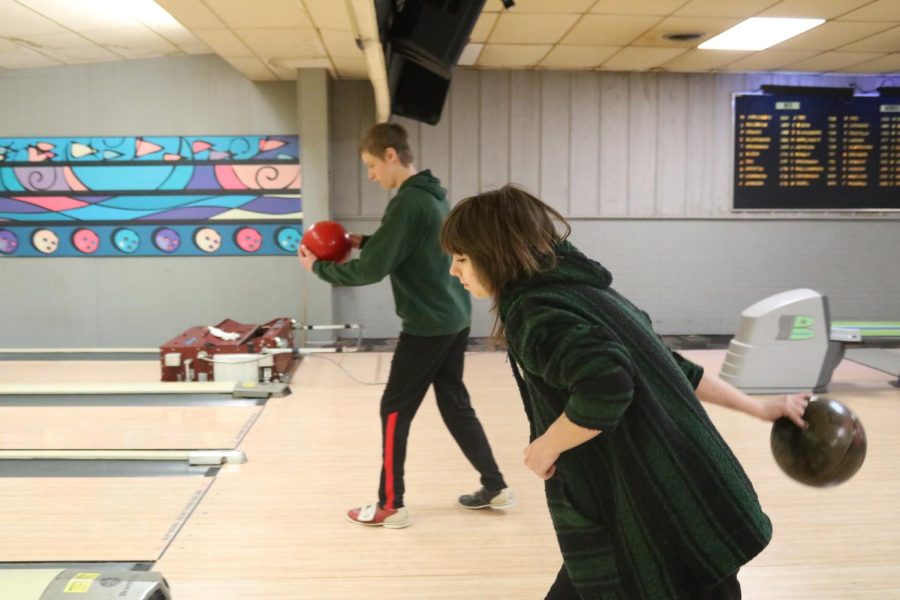The Value of Physical Education
Physical education doesn’t just improve students’ physical health, but their mental and spiritual health as well.
Amelia Peterson prepares to bowl and hopes for a strike. The PE class played bowling tournaments during first semester.
April 29, 2022
The first time physical education (PE) was taught in an American school was in 1820 at Round Hill School in Northampton, Massachusetts. In the early 1900s, a few states passed legislation requiring PE in school. During World War I, it was found that one-third of military recruits were physically unfit for combat. After that, the US government started caring more about physical fitness and took more responsibility, with many states passing Physical Education Legislation requiring PE in schools, but PE didn’t catch on fully until the mid-1900s.
PE teaches students how to take care of themselves. It also shows students how they can improve their health, both physically and mentally. Students know that it can help their body, but it helps their mind and emotional well-being.
Physical education is an important part of living a healthy life. It is especially important for kids because physical exercise promotes healthy growth and development. Many students don’t always eat food that has a lot of calories and might not be the best for their bodies and PE can help them prevent obesity. By exercising, students use the leftover calories for energy. Students that perform aerobic exercises two to three times a day for at least 20 minutes have a healthier heart than students that don’t take part in physical exercise. PE improves students’ physical fitness and overall health, but it also helps with a lot of other things as well.
PE enhances the ability to think, concentrate and focus. According to several studies, physical exercise has been shown to enlarge the basal ganglia part of the brain. This part of the brain controls a person’s ability to focus. Today students have distractions through technology such as phones, TV, and video games. Schools can improve their students’ focus by promoting PE in school.
Physical education helps prevent sleep deprivation. Students that take part in physical activities and routinely exercise have a tired body that wants a good night’s sleep. This will give students the ability to be attentive in classes and help them be more helpful to teachers and other students.
PE helps students relieve stress and anxiety caused by school and other factors in students’ lives like work and family life. Stressed students can’t concentrate and focus on their performance in school unless they can do something to release stress. Physically active students are more likely to be happier and healthier, which leads to them being better students in the classroom.
Physical activity also helps students gain flexibility and give them the ability to better balance school and other aspects of their lives. Exercise helps in developing blood circulation, giving more oxygen to the heart and brain. This allows the body to maintain a balance between physical and mental health.
What if someone doesn’t want to take part in PE at school? To help with that, teachers are trying to make PE more fun and engaging. PE and health teacher Cole Renken said he tries to play “games” and have a “variety” in class. His PE classes play anything from “soccer to basketball and pickleball.” His goal as a teacher for students in PE is to have fun and do a healthy activity at the same time.
As you can see there are many reasons to have a PE class. It helps students improve their physical, mental, and spiritual health. Physical exercise relieves stress and anxiety, as well as helps students, focus more. It is also obvious that it strengthens the body and causes students to be healthier as a whole.











